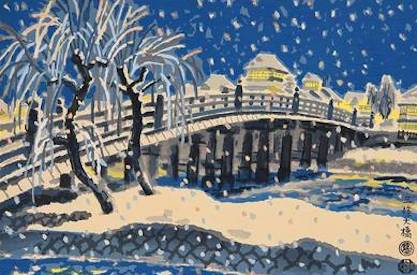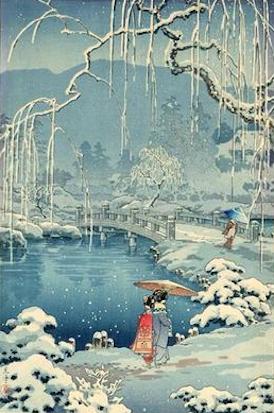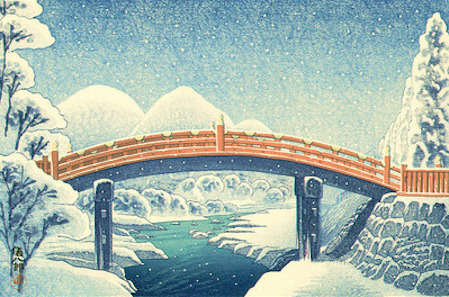Japan Art and Bridges in the Snow
Lee Jay Walker
Modern Tokyo Times

Eiichi Kotozuka was born in Osaka in 1906. He is noted for his sōsaku hanga (creative prints) art – a rich art form that blessed Japan in this period of history.
The stunning print above of a bridge in the snow highlights the richness of Eiichi Kotozuka.
After the convulsions of World War Two – he created several stunning series of art. This includes the Scenes from Four Historical Cities and Eight Snow Scenes of Kyoto.

Tsuchiya Kōitsu was born in 1870 and died in 1949 during the post-war period. He witnessed the modernization processes of the Meiji Period (1868-1912) and greater liberalism during the Taisho Period (1912-1926) – to the convulsions of nationalism, war, and the ultimate defeat of Japan.
Above, his art is a million miles away from the militarization that befell Japan and Germany in the middle of the 1930s.
The Koller Collection of Asian Art says, “After abandoning lithography and working primarily in painting for nearly three decades, Kōitsu started designing more landscapes for woodblock prints (fukei-ga) in 1931. His return to printmaking is typically traced to the apocryphal meeting with esteemed print publisher Watanabe Shōzaburō (1885–1962) at a memorial exhibition commemorating Kiyochika.”

The last print is the Sacred Bridge (The Shinkyo Bridge) by Gihachiro Okuyama (1907-1981).
This delightful bridge in Nikko visibly connects nature and faith. Hence, people walk over this bridge before visiting the Buddhist temples and Shinto shrines of this beautiful part of Nikko.
All three artists blessed Japanese art in the twentieth century.

Modern Tokyo News is part of the Modern Tokyo Times group
http://moderntokyotimes.com Modern Tokyo Times – International News and Japan News
http://sawakoart.com – Sawako Utsumi and Modern Tokyo Times artist
https://moderntokyonews.com Modern Tokyo News – Tokyo News and International News
PLEASE JOIN ON TWITTER
https://twitter.com/MTT_News Modern Tokyo Times
PLEASE JOIN ON FACEBOOK